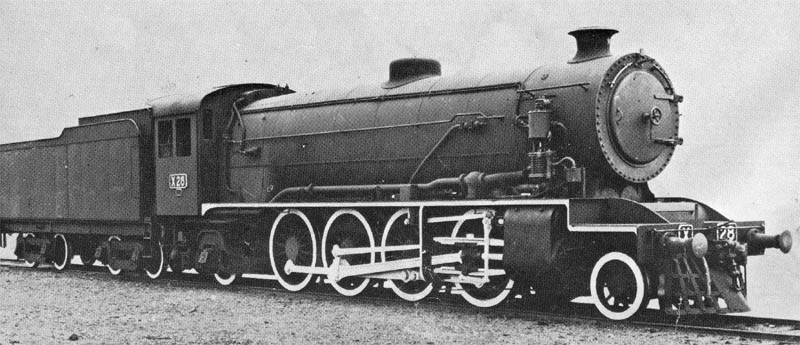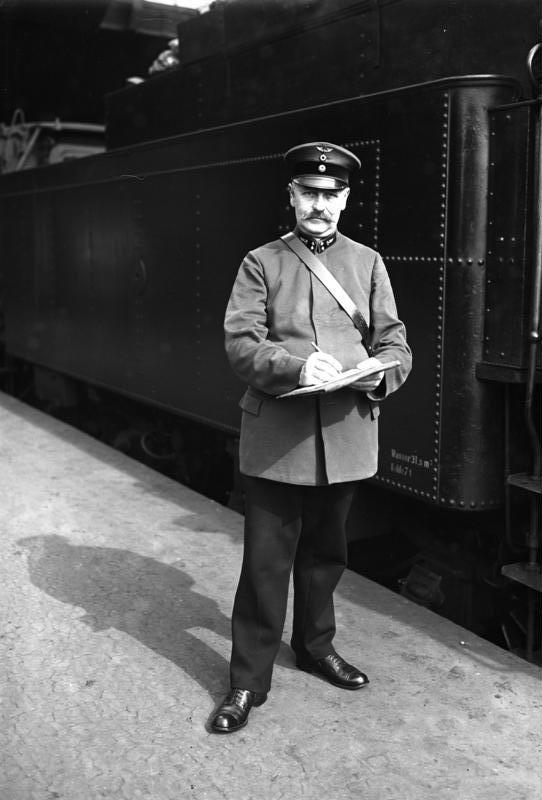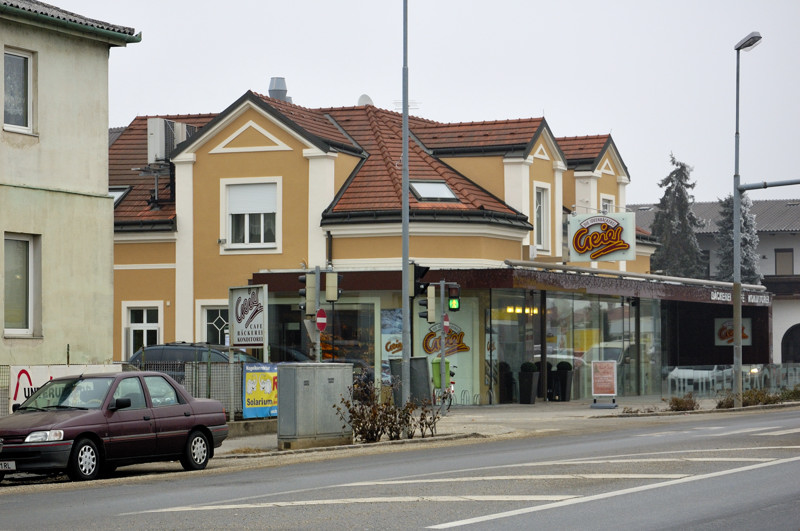|
2-8-4
Under the Whyte notation, a 2-8-4 is a steam locomotive that has two unpowered leading wheels, followed by eight coupled and powered driving wheels, and four trailing wheels. This locomotive type is most often referred to as a Berkshire, though the Chesapeake and Ohio Railway used the name Kanawha for their 2-8-4s. In Europe, this wheel arrangement was mostly seen in mainline passenger express locomotives and, in certain countries, in tank locomotives. Overview In the United States of America, the 2-8-4 wheel arrangement was a further development of the enormously successful 2-8-2 Mikado. It resulted from the requirement for a freight locomotive with even greater steam heating capacity. To produce more steam, a solution was to increase the size of the locomotive's firebox, though the 2-8-2 wheel arrangement, with its single axle trailing truck, limited the permissible increased axle loading from a larger firebox. The most practical solution was to add a second trailing axle to s ... [...More Info...] [...Related Items...] OR: [Wikipedia] [Google] [Baidu] |
CSAR Class C 2-8-4T
The Central South African Railways Class C 2-8-4T of 1900 was a South African steam locomotive from the pre-Union of South Africa, Union era in Transvaal Colony, Transvaal. In 1900, during the Second Boer War, the Imperial Military Railways experienced a shortage of locomotives and six Berkshire type tank locomotives, destined for the Western Australian Government Railways, were diverted to South Africa where they became known as the ''Western Australians''. In 1902, they came onto the roster of the Central South African Railways and were designated Class C.Espitalier, T.J.; Day, W.A.J. (1945). ''The Locomotive in South Africa - A Brief History of Railway Development. Chapter VI - Imperial Military Railways and C.S.A.R.'' (Continued). South African Railways and Harbours Magazine, January 1945. pp. 11-16.South African 2-8-4T, ''The Locomotive Magazine'', August 1955, p.142 The Second Boer War In 1899, when the Second Boer War broke out, the invading British military forces took ... [...More Info...] [...Related Items...] OR: [Wikipedia] [Google] [Baidu] |
Lima Locomotive Works
Lima Locomotive Works was an American firm that manufactured railroad locomotives from the 1870s through the 1950s. The company took the most distinctive part of its name from its main shop's location in Lima, Ohio. The shops were located between the Erie Railroad main line, the Baltimore & Ohio's Cincinnati-Toledo main line and the Nickel Plate Road main line and shops. The company is best known for producing the Shay geared logging-steam locomotive, developed by Ephraim Shay, and for William E. Woodard's "Super Power" advanced steam locomotive concept – exemplified by the prototype 2-8-4 Berkshire, Lima demonstrator A-1. In World War II the Lima plant produced the M4A1 version of the M4 Sherman tank. History In 1878 James Alley contracted the Lima Machine Works to build a steam locomotive that Ephraim Shay had designed. In April 1880, Lima rebuilt Ephraim Shay's original design, using vertically side-mounted pistons mounted on the right, connected to a drive l ... [...More Info...] [...Related Items...] OR: [Wikipedia] [Google] [Baidu] |
WAGR K Class
The K-class was a class of 2-8-4T steam locomotives of the Western Australian Government Railways History Between October 1893 and August 1898, the WAGR took delivery of 24 K class locomotives from Neilson & Co. They entered service on the Eastern Railway between Midland Junction and Northam. In 1902, they were displaced from this work by the F class. They then mainly operated freight services on the Collie line and within Perth, although they did operate Royal Perth Show and raceday special passenger services. In 1915, two were repowered with superheated boilers. A further three followed, but all were converted back by 1937. Further reboilerings increased power output by a quarter. Six examples originally intended for the WAGR were purchased by the British Government and sent to South Africa to ease a shortage being encountered by the Imperial Military Railways as a result of the Boer War The Second Boer War ( af, Tweede Vryheidsoorlog, , 11 October 189931 May 19 ... [...More Info...] [...Related Items...] OR: [Wikipedia] [Google] [Baidu] |
Whyte Notation
Whyte notation is a classification method for steam locomotives, and some internal combustion locomotives and electric locomotives, by wheel arrangement. It was devised by Frederick Methvan Whyte, and came into use in the early twentieth century following a December 1900 editorial in ''American Engineer and Railroad Journal''. The notation was adopted and remains in use in North America and the United Kingdom to describe the wheel arrangements of steam locomotives (in the latter case also for diesel and electric locomotives), but for modern locomotives, multiple units and trams it has been supplanted by the UIC system in Europe and by the AAR system (essentially a simplification of the UIC system) in North America. Structure of the system Basic form The notation in its basic form counts the number of leading wheels, then the number of driving wheels, and finally the number of trailing wheels, numbers being separated by dashes. For example, a locomotive with two leadi ... [...More Info...] [...Related Items...] OR: [Wikipedia] [Google] [Baidu] |
BBÖ 114
The BBÖ 114 was a class of one Austrian three-cylinder 2-8-4 express train steam locomotive. At the same time as plans were developed for the two-cylinder 214 series, design emerged in the Wiener Neustädter Lokomotivfabrik for a three-cylinder engine. In order to be able to compare the two designs it was decided to build a prototype of each one. Number 114.01 was built in the Wiener Neustädter Lokomotivfabrik and delivered in 1929. In general the advantage of three-cylinder locomotives lies in their more powerful torque and a better balance of the rotating masses, which leads to lower wear and tear. The disadvantage is a higher fuel consumption due to the three steam engines. This was true in the case of 114.01 which in comparison with locomotive 214.01 had a 9% higher consumption of coal. Difficult access to the inside gear and the associated poor maintainability of locomotive 114.01, combined with the fact that 214.01 did better in the trial runs, led to the 214s going into ... [...More Info...] [...Related Items...] OR: [Wikipedia] [Google] [Baidu] |
2-8-2
Under the Whyte notation for the classification of steam locomotives, represents the wheel arrangement of two leading wheels on one axle, usually in a leading truck, eight powered and coupled driving wheels on four axles and two trailing wheels on one axle, usually in a trailing truck. This configuration of steam locomotive is most often referred to as a Mikado, frequently shortened to Mike. At times it was also referred to on some railroads in the United States of America as the McAdoo Mikado and, during World War II, the MacArthur. The notation 2-8-2T indicates a tank locomotive of this wheel arrangement, the "T" suffix indicating a locomotive on which the water is carried in tanks mounted on the engine rather than in an attached tender. Overview The 2-8-2 wheel arrangement allowed the locomotive's firebox to be placed behind instead of above the driving wheels, thereby allowing a larger firebox that could be both wide and deep. This supported a greater rate of combustion ... [...More Info...] [...Related Items...] OR: [Wikipedia] [Google] [Baidu] |
Wheel Arrangement
In rail transport, a wheel arrangement or wheel configuration is a system of classifying the way in which wheels are distributed under a locomotive. Several notations exist to describe the wheel assemblies of a locomotive by type, position, and connections, with the adopted notations varying by country. Within a given country, different notations may also be employed for different kinds of locomotives, such as steam, electric, and diesel powered. Especially in steam days, wheel arrangement was an important attribute of a locomotive because there were many different types of layout adopted, each wheel being optimised for a different use (often with only some being actually "driven"). Modern diesel and electric locomotives are much more uniform, usually with all axles driven. Major notation schemes The main notations are the Whyte notation (based on counting the wheels), the AAR wheel arrangement notation (based on counting either the axles or the bogies), and the UIC classificat ... [...More Info...] [...Related Items...] OR: [Wikipedia] [Google] [Baidu] |
Steam Locomotive
A steam locomotive is a locomotive that provides the force to move itself and other vehicles by means of the expansion of steam. It is fuelled by burning combustible material (usually coal, oil or, rarely, wood) to heat water in the locomotive's boiler to the point where it becomes gaseous and its volume increases 1,700 times. Functionally, it is a steam engine on wheels. In most locomotives, the steam is admitted alternately to each end of its cylinders, in which pistons are mechanically connected to the locomotive's main wheels. Fuel and water supplies are usually carried with the locomotive, either on the locomotive itself or in a tender coupled to it. Variations in this general design include electrically-powered boilers, turbines in place of pistons, and using steam generated externally. Steam locomotives were first developed in the United Kingdom during the early 19th century and used for railway transport until the middle of the 20th century. Richard Trevithick ... [...More Info...] [...Related Items...] OR: [Wikipedia] [Google] [Baidu] |
Chesapeake And Ohio Railway
The Chesapeake and Ohio Railway was a Class I railroad formed in 1869 in Virginia from several smaller Virginia railroads begun in the 19th century. Led by industrialist Collis P. Huntington, it reached from Virginia's capital city of Richmond to the Ohio River by 1873, where the railroad town (and later city) of Huntington, West Virginia, was named for him. Tapping the coal reserves of West Virginia, the C&O's Peninsula Extension to new coal piers on the harbor of Hampton Roads resulted in the creation of the new City of Newport News. Coal revenues also led the forging of a rail link to the Midwest, eventually reaching Columbus, Cincinnati and Toledo in Ohio and Chicago, Illinois. By the early 1960s the C&O was headquartered in Cleveland, Ohio. In 1972, under the leadership of Cyrus Eaton, it became part of the Chessie System, along with the Baltimore and Ohio and Western Maryland Railway. The Chessie System was later combined with the Seaboard Coast Line and Louisvill ... [...More Info...] [...Related Items...] OR: [Wikipedia] [Google] [Baidu] |
South Australian Railways
South Australian Railways (SAR) was the statutory corporation through which the Government of South Australia built and operated railways in South Australia from 1854 until March 1978, when its non-urban railways were incorporated into Australian National, and its Adelaide urban lines were transferred to the State Transport Authority. The SAR had three major rail gauges: 1600 mm (5 ft 3 in); 1435 mm (4 ft in); and 1067 mm (3 ft 6 in). History Colonial period The first railway in South Australia was laid in 1854 between Goolwa and Port Elliot to allow for goods to be transferred between paddle steamers on the Murray River and seagoing vessels. The next railway was laid from the harbour at Port Adelaide, to the capital, Adelaide, and was laid with Irish gauge track. This line was opened in 1856. Later on, branch lines in the state's north in the mining towns of Kapunda and Burra were linked through to the Adelaide metrop ... [...More Info...] [...Related Items...] OR: [Wikipedia] [Google] [Baidu] |
Deutsche Reichsbahn
The ''Deutsche Reichsbahn'', also known as the German National Railway, the German State Railway, German Reich Railway, and the German Imperial Railway, was the German national railway system created after the end of World War I from the regional railways of the individual states of the German Empire. The ''Deutsche Reichsbahn'' has been described as "the largest enterprise in the capitalist world in the years between 1920 and 1932"; nevertheless its importance "arises primarily from the fact that the Reichsbahn was at the center of events in a period of great turmoil in German history". Overview The company was founded on 1 April 1920 as the ("German Imperial Railways") when the Weimar Republic, which still used the nation-state term of the previous monarchy, (German Reich, hence the usage of the in the name of the railway; the monarchical term was ), took national control of the German railways, which had previously been run by the German states. In 1924 it was reorganise ... [...More Info...] [...Related Items...] OR: [Wikipedia] [Google] [Baidu] |
Strasshof 2007 12
Strasshof an der Nordbahn (meaning ''Strasshof at the Northern railway''; Central Bavarian: ''Strasshof aun da Noadbauh'') is a satellite town 25 km east of Vienna, Austria. A historical locomotive built by LOFAG is displayed in the town. Geography Strasshof an der Nordbahn lies in Marchfeld in Lower Austria. About 21.08 percent of the municipality is forested. History Strasshof had about 50 inhabitants in 1900, and a railroad yard functioned from 1908 to 1959. In 1944, about 75 percent of 21,000 Hungarian Jews deported from a concentration camp at Strasshof survived due to an agreement between the Aid and Rescue Committee of Budapest and Adolf Eichmann. On 2 December 1944 the marshalling yard in "Straszhof" was targeted in a United States Army Air Forces bombing by the 47th Bombardment Wing. There was solid overcast over the city causing the wing to bomb Wien Florisdorf Shell Refinery as an alternative. The west marshalling yard was bombed on 26 March 1945 by the 49t ... [...More Info...] [...Related Items...] OR: [Wikipedia] [Google] [Baidu] |








